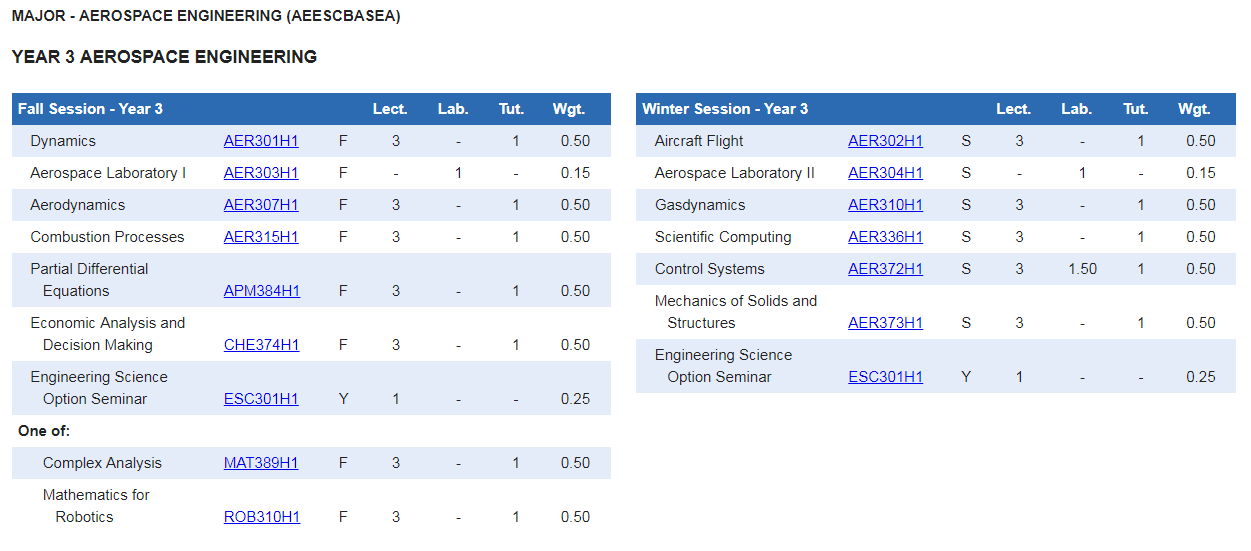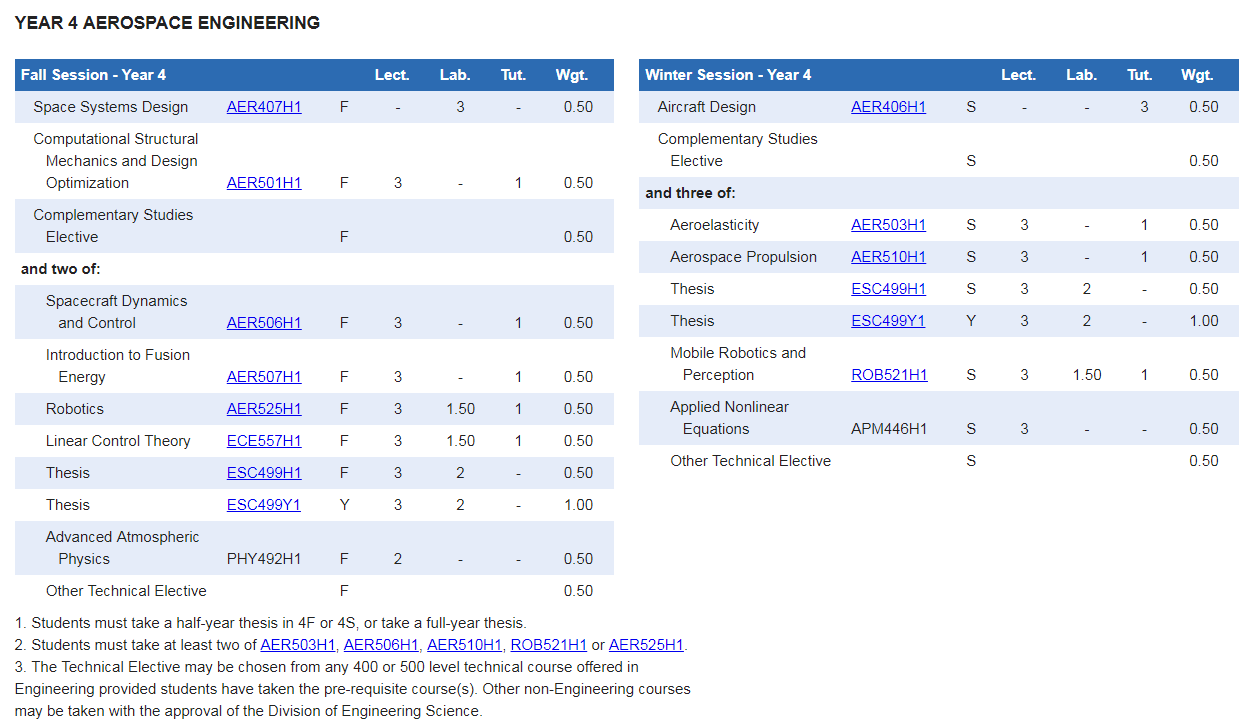The Aerospace Engineering option of the Engineering Science program focuses on aeronautical-engineering and space-systems engineering, featuring courses in flight dynamics, mechanics of structures, fluid dynamics, materials, stability, control and design of aircraft and spacecraft. Because aerospace engineering is a high-tech and multi-disciplinary field, the curriculum also includes elective courses to accommodate students’ interests.
Students have the opportunity to apply their knowledge and innovative ability to the solution of practical problems of their own selection. To do so, students have access to a well-equipped aerospace laboratory for the design, fabrication and testing of prototype devices. The undergraduate laboratory includes operational wind tunnels, an aircraft flight simulator, sophisticated diagnostic instrumentation and computer facilities.
All Aero Option Students are required to complete two capstone design courses. AER406H1 S Aircraft Design provides students with the opportunity to design, construct and fly radio-controlled aircraft, while the AER407H1 F Space Systems Design course gives students further experience in the design of complex aerospace systems.
In their fourth year, undergraduate aerospace students are required to do a ESC499 Thesis course. Students work under the supervision of professors on related research projects. The submission of a thesis at the end of the term is a major requirement.
Visit the Engineering Science Aerospace Option page for full course descriptions for the Aircraft Design, Space Systems Design courses. For the Thesis courses visit the Applied Science and Engineering Calendar.
Undergraduate Curriculum
The first two years of the Engineering Science curriculum are common to all options. The full Curriculum details can be found in the Applied Science and Engineering calendar.
3rd and 4th year students in the Aerospace Option follow the curriculum described below:


Professional Experience Year after the 2nd or 3rd year of undergraduate study
Aerospace students may also choose to complete a Professional Experience Year (PEY) as part of their aerospace education. The PEY program is optional, and consists of a 16-month continuous work period immediately following either the second or the third year of undergraduate study.
Placements are made by the faculty PEY staff, matching the interests of student with available positions. Participants who choose the PEY program require a total of five years to earn their engineering degrees, thus completing their education with a curriculum vitae that includes work experience in industry.
Recent placements have been with MD Robotics, Pratt & Whitney, Bombardier, etc.
C.A.S.I. Student Branch
Many of the Engineering Science students in the Aerospace Engineering option are actively involved in a variety of activities and events organized and/or sponsored by the CASI University of Toronto Student Branch. These activities and events include involvement in national aerospace engineering conferences and CASI sponsored design competitions (e.g, the UofT branch rocket and glider competitions). Please refer to the CASI UofT Student Branch web site for more details.
Want more information on undergraduate programs?
Contact:
Prof. P.R. GrantAerospace Option Chair
University of Toronto
Institute for Aerospace Studies
Tel: (416) 667-7726
Fax: (416) 667-7799
e-mail: Prof. P.R. Grant or the Division of Engineering Science